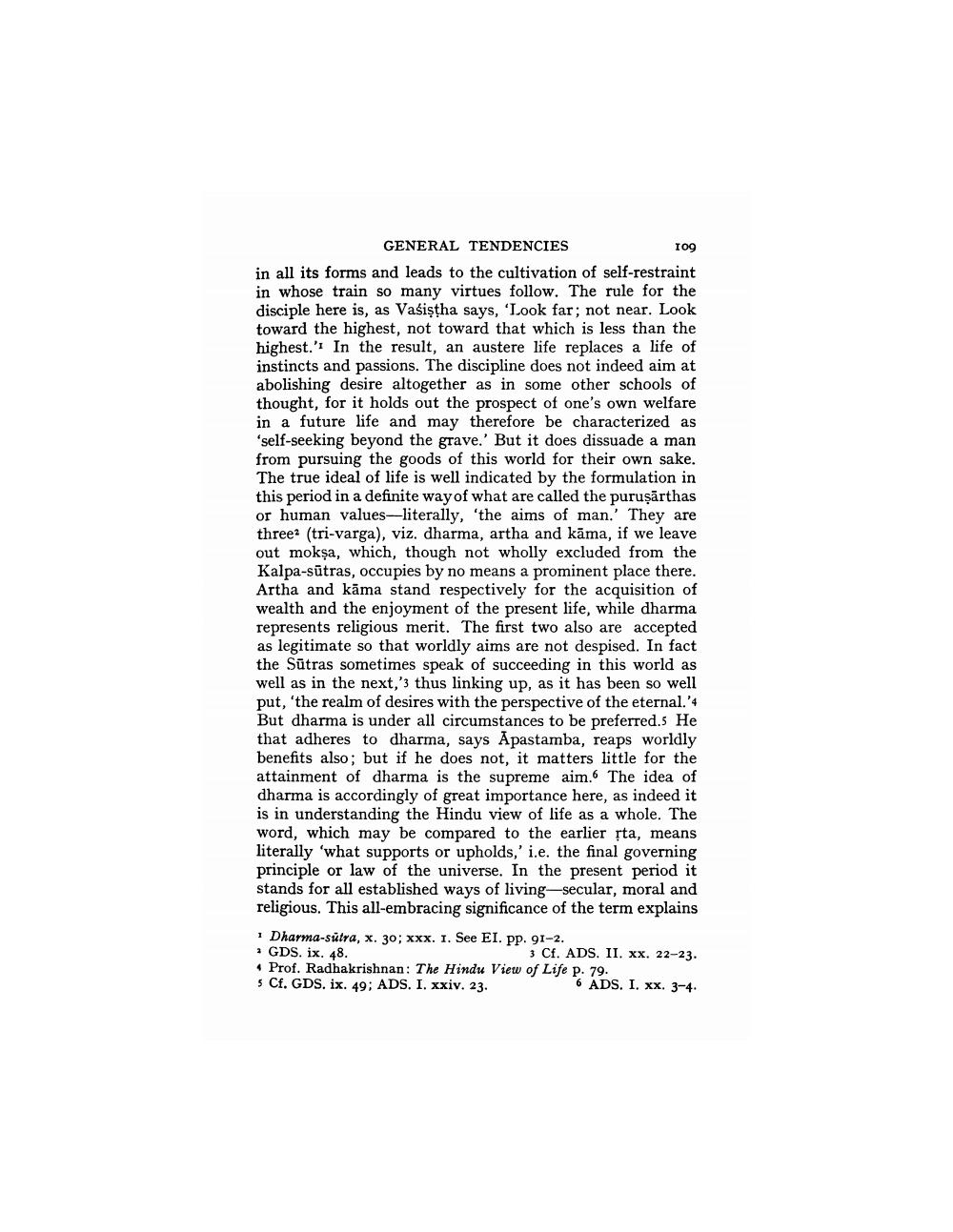________________
GENERAL TENDENCIES
109 in all its forms and leads to the cultivation of self-restraint in whose train so many virtues follow. The rule for the disciple here is, as Vaśiştha says, 'Look far; not near. Look toward the highest, not toward that which is less than the highest.'. In the result, an austere life replaces a life of instincts and passions. The discipline does not indeed aim at abolishing desire altogether as in some other schools of thought, for it holds out the prospect of one's own welfare in a future life and may therefore be characterized as 'self-seeking beyond the grave.' But it does dissuade a man from pursuing the goods of this world for their own sake. The true ideal of life is well indicated by the formulation in this period in a definite way of what are called the puruşārthas or human values-literally, the aims of man.' They are three? (tri-varga), viz. dharma, artha and kāma, if we leave out mokşa, which, though not wholly excluded from the Kalpa-sūtras, occupies by no means a prominent place there. Artha and kāma stand respectively for the acquisition of wealth and the enjoyment of the present life, while dharma represents religious merit. The first two also are accepted as legitimate so that worldly aims are not despised. In fact the Sūtras sometimes speak of succeeding in this world as well as in the next,'3 thus linking up, as it has been so well put, 'the realm of desires with the perspective of the eternal.'4 But dharma is under all circumstances to be preferred. He that adheres to dharma, says Apastamba, reaps worldly benefits also; but if he does not, it matters little for the attainment of dharma is the supreme aim. The idea of dharma is accordingly of great importance here, as indeed it is in understanding the Hindu view of life as a whole. The word, which may be compared to the earlier sta, means literally 'what supports or upholds,' i.e. the final governing principle or law of the universe. In the present period it stands for all established ways of living-secular, moral and religious. This all-embracing significance of the term explains * Dharma-sütra, x. 30; xxx. I. See EI. pp. 91-2. * GDS. ix. 48.
3 Cf. ADS. II. xx. 22-23. Prof. Radhakrishnan: The Hindu View of Life p. 79. 5 Cf. GDS. ix. 49; ADS. I. xxiv. 23.
6 ADS. I. xx. 3-4.




